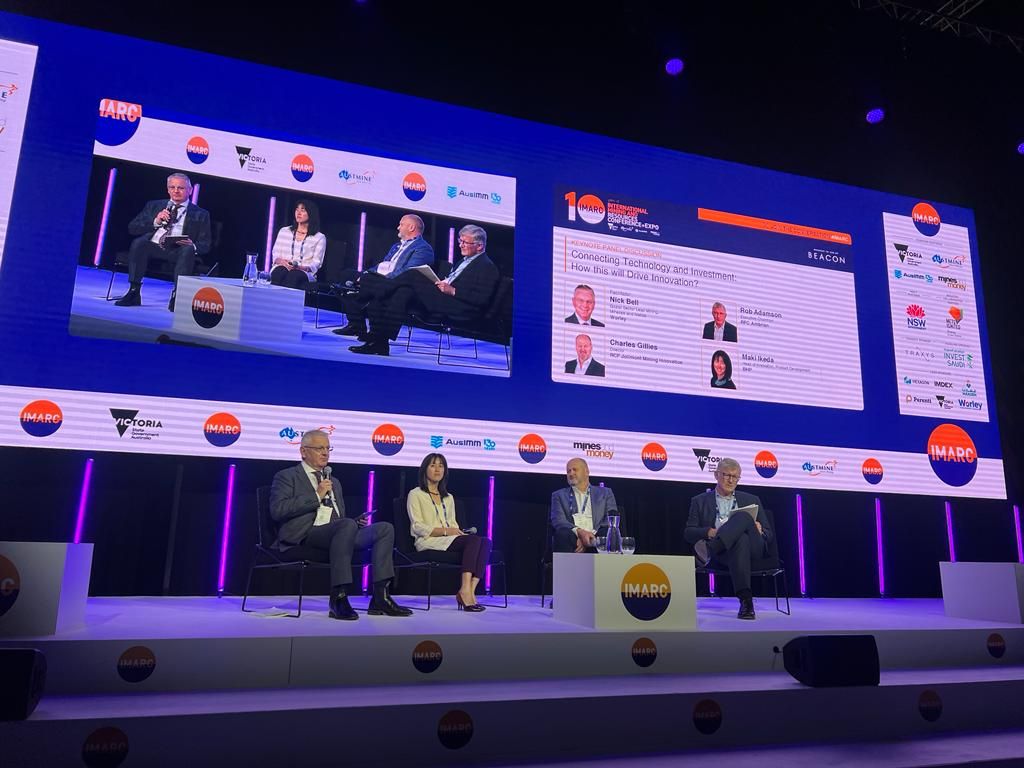Event report
IMARC: the modern mine, electrification and net zero
GlobalData reports on IMARC held at ICC Sydney in October/November 2023.

Credit: IMARC
Australia’s most influential mining event, IMARC, has just wrapped up for another year. As professionals from across the world came together to talk about collaboration, innovation and all things mining, GlobalData reviews the key topics and takeouts from the show.
The three-day event held in Sydney covered the most important themes impacting the future of mining: the global energy transition, mining value chain, environmental resilience, investment, technology, collaboration and digital transformation.
The 2023 event was IMARC’s 10th anniversary. It welcomed over 9,000 attendees from over 120 countries, with over 500 speakers from global mining giants such as BHP, Fortescue, Gold Fields, Worley, Perenti, IGO, the US Departments of Energy and Defence, and the International Council on Mining and Metals (ICMM).
The modern mine
Speaking on the first day of the conference, industry leaders expressed their excitement at electrification, automation and artificial intelligence (AI), to improve mining operations, and keep the industry at the forefront of economic growth.
Australia’s mining industry is a powerhouse of the economy, fostering innovation from local and global companies working in the region. “Mining underpins Australia’s prosperity, and the abundance of critical minerals and rare earth deposits position it for global leadership in producing the materials to power the clean energy transition,” Australian Minister for Resources Madeleine King told the conference. She noted that mining accounts for 75% of Australian exports and almost 15% of GDP. Moreover, resources exports generated a record $460bn in the latest financial year.
Discussions with delegates at IMARC suggest that challenges within the modern mine include distance, cost and scale, and that innovation is the key to overcoming them. Further evolution of the modern mine is likely to rely on increased investment in technology and collaboration. To ensure future growth of the Australian mining industry, mining operations need to be technologically advanced, sustainable, socially considerate, productive and efficient, delegates suggested.
Electrifying mining
Together with automation and digitalisation, electrification was described as one of the most substantive technological shifts in mining for more than 70 years. This is mostly about the electrification of diesel-powered mine vehicles, haulage trucks and fixed assets such as electric drive automatic control systems for conveyor belts.
During a keynote discussion, Paul Lucey, in charge of mine electrification and technology at Worley, spoke about the evolution of haulage trucks and how decarbonisation and AI are triggering a billion-dollar transformation. There are 16,500 haulage trucks in Australia set for improvements to their design, suitability to the job, and human interaction.
“We have effectively pulled apart dozens of haulage trucks and assessed every component for its efficiency,” Lucey said. “We found there is up to 20% parasitic load – that is, components that don’t really do anything but add weight and create a drag on performance. The haulage trucks of the future will use technology such as AI to reduce energy use, minimise engine and tyre wear and determine how to operate […] in the most efficient way.”
Other speakers echoed this sentiment, stressing the importance of structural innovation and collaboration to bridge the gap between investment and innovation.

Rob Adamson RFC. Credit: IMARC
Future proofing mining through storytelling
Experts in the mining industry positioned its success as reliant on three pillars: science, deep industry knowledge, and strong business acumen.
In a panel discussion on the third day, keynote speaker Charles Gillies, director of RCF Jolimont Mining Innovation, said Australia’s mining equipment, technology and services (METS) sector is a world leader, yet it is struggling to tell its story to consumers and the wider community. He went on to explain that Australia ranks amongst the best in the world when it comes to innovation in engineering, but could do with more innovation around storytelling.
Rob Adamson, executive chairman at RFC Ambrian, agreed, suggesting that the METS sector has not embraced storytelling, unlike other sectors, such as the automotive manufacturing industry.
ESG and net-zero at IMARC
Several speakers argued that the mining industry is on the right path regarding ESG, albeit with more work to do to achieve all its goals. Australia’s strong social and governance policies, along with its net zero-targets and environmental policy reform, position it as a global leader with a proud track record in the extractives sector, said Mark Robinson, executive director of the Extractive Transparency Initiative, the global standard for the good governance of oil, gas and mineral resources.
Nevertheless, despite efforts to date, there is still work to do in acknowledging the impact of mining on First Nations people across the world, highlighted Peter Bryant, board chair and managing director of Clareo, a company that advises the mining sector, and co-founder and board chair of the Development Partner Institute, a nonprofit focused on improved ESG outcomes for communities from resource development projects.
Jordan Phillips, a resource and energy-focused partner at law firm MinterEllison, stated that too often businesses and corporations are turning to lawyers for social issues that could be resolved in a focused, collaborative manner.